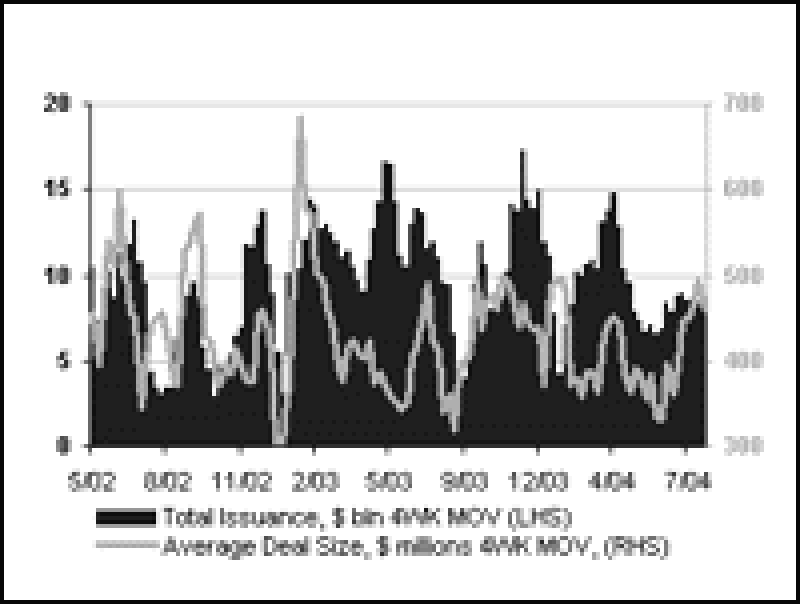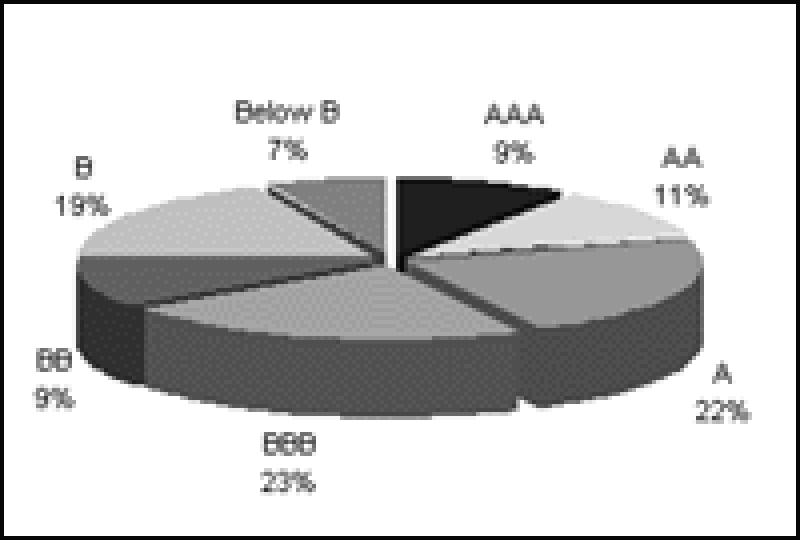CreditSights: VC Financing Creeps Up
According to the latest MoneyTree Survey by PricewaterhouseCoopers, Thomson Venture Economics and the National Capital Venture Association, venture capital financing totaled $5.58 billion in the second quarter. This is up from $5.05 billion in the previous quarter but, while this is the highest quarterly investment volume since the second quarter of 2002, current levels remain far below the industry peak. Still, the rising trend, modest though it may be, is good news, as is the distribution of the financing by stage of investment.
The survey categorizes investments into four categories: startup/seed, early stage, expansion, and later stage. One of the broader concerns in the post-bubble environment has been that the erosion of risk appetite has stymied the development of new technologies, giving rise to fears that a depleted new product pipeline would not be able to lend support to continued productivity gains. From the perspective of VC financing, this was doubly in evidence as, even as financing volumes dropped, portfolios matured with new deals being biased toward expansion and later stage financing. Startup deals, which accounted for as much as 20% of VC volume in 1995, now comprise only 1-2% of investment and early-stage volume went from a peak of 30% in the fourth quarter of 1998 to its current 17-20% range. This has allowed later-stage financing to gain share and these deals have gone from being less than 20% of the total before the 2000 technology market bust to a high of 31% in the first quarter. In the latest quarter, however, there were encouraging moves at both end of the spectrum.
These trends are also in evidence when you analyze the data by the number, as opposed to the volume, of deals. While a one-quarter move does not guarantee a trend, the changes are consistent with the anecdotal evidence that suggests a more balanced mix between early and later stage funding in recent months. 229 companies received early stage funding in the latest quarter, the highest absolute number in two years and the highest proportional share in three years. This augurs well for a rebalancing of VC portfolios and a greater expansion in risk appetite that will once again feed into the product development cycle. Key to the process now is that the economic expansion continues apace so that the investment trends that nurture the all-important exit strategies can gain traction. Despite the strong aggregate levels of economic growth seen in the last 18 months, business investment via capital expenditure, mergers, and acquisitions has remained constrained and the IPO market has been hampered by the lackluster performance of equities so far this year.
From the perspective of industry investment the broad technology sector still receives roughly half of the VC pie. Software remains the dominant sector both by volume (22% in the latest quarter) and by the number of deals (28%) but there has been no expansion in this allocation since the hay days of 2000. Contrasted with that is the rapid rise in popularity of life sciences. Biotechnology now receives the second largest industry allocation and in the second quarter it captured 17% of the total dollars and 11% of the deals. Back in 2000, only 4% of the investment volume was being directed here. There has been a similar increase of investment in medical devices and equipment; in the latest quarter it captured 9% of the investment pool compared with just 2% back in 2000. These shifting trends, when viewed in conjunction with the much lower levels of absolute investment, give rise to some concern about the degree to which this entrepreneurial investment will have a kind of multiplier effect on the economy. One can argue that investment needs to be judicious in order to be effective and that although the VC volumes prior to the bust were impressive, they were not all necessarily productive. If the VC community in now applying more stringent standards before making investments then the effect of the lower volumes on the creation of new products and technologies may be less than would seem likely at first glance. But the rise in status of the life sciences industries as the hot sector for deals does suggest a bias in entrepreneurial investment to "quality of life" improvement rather than productivity improvement.









